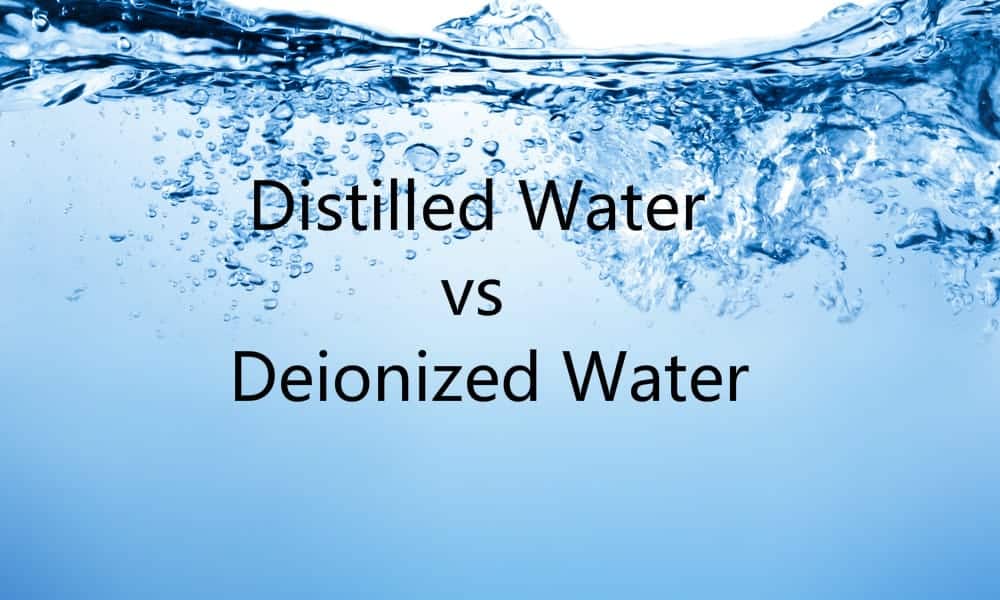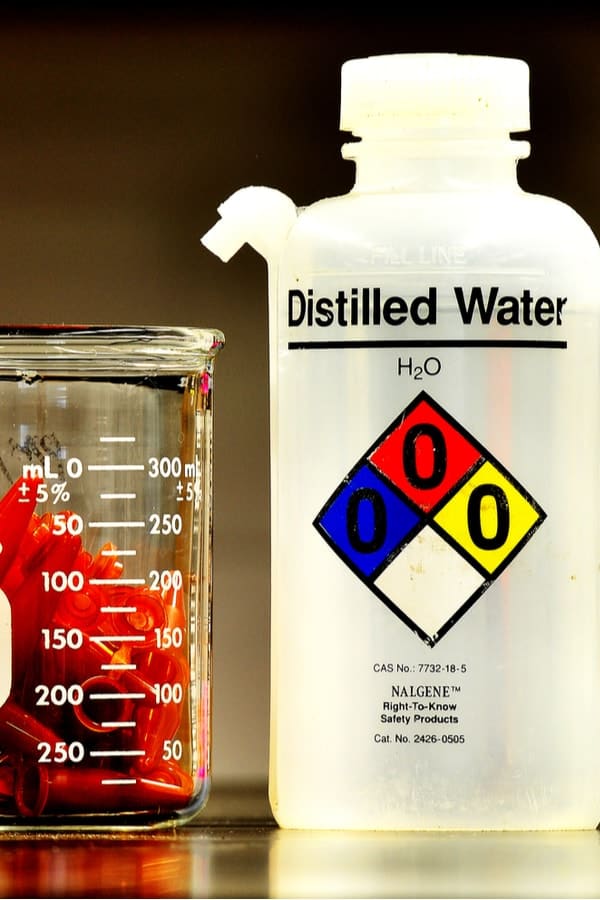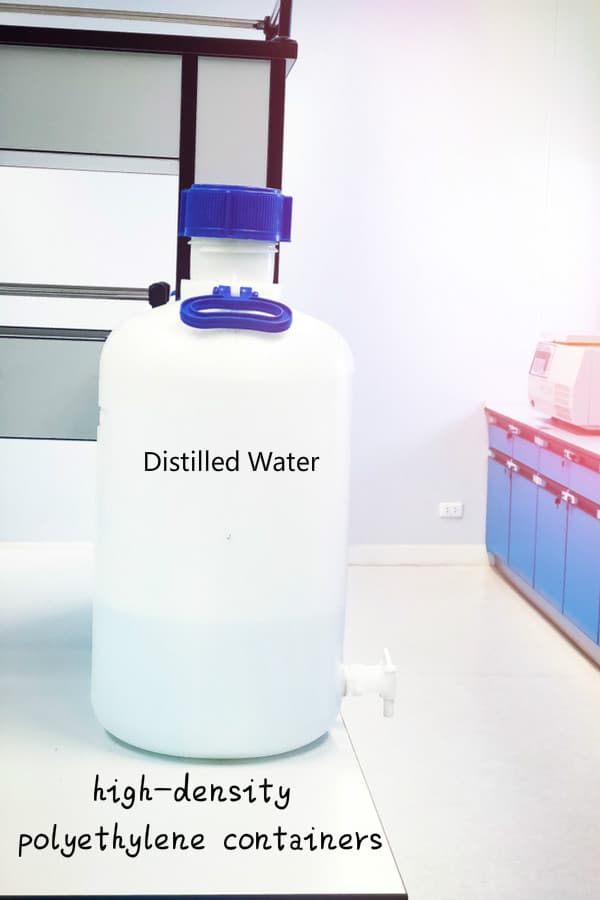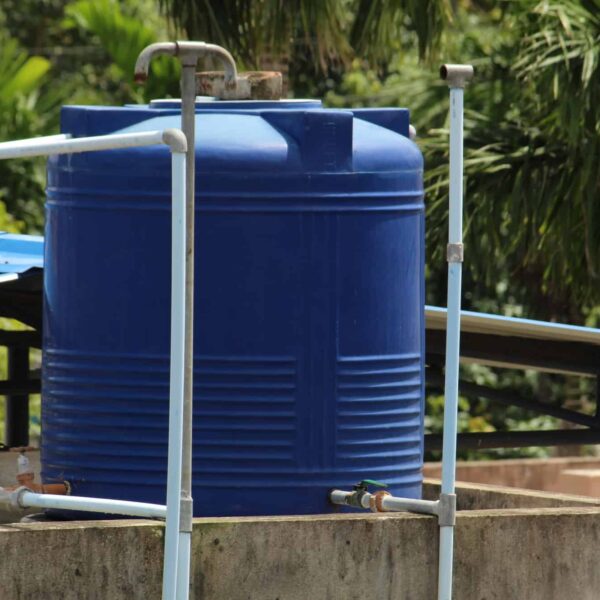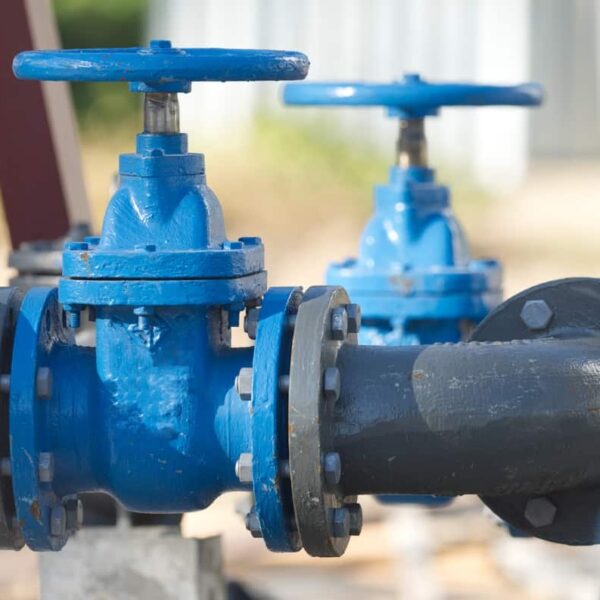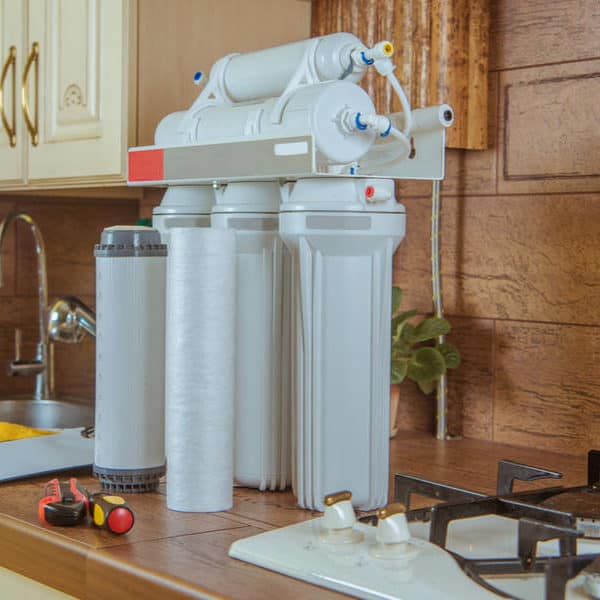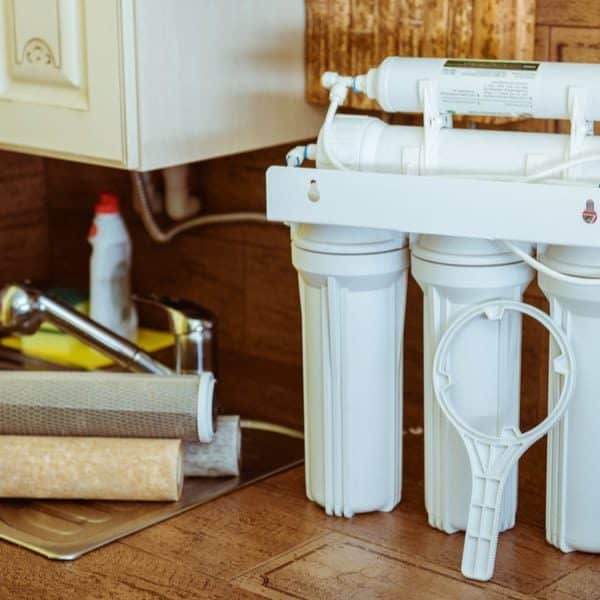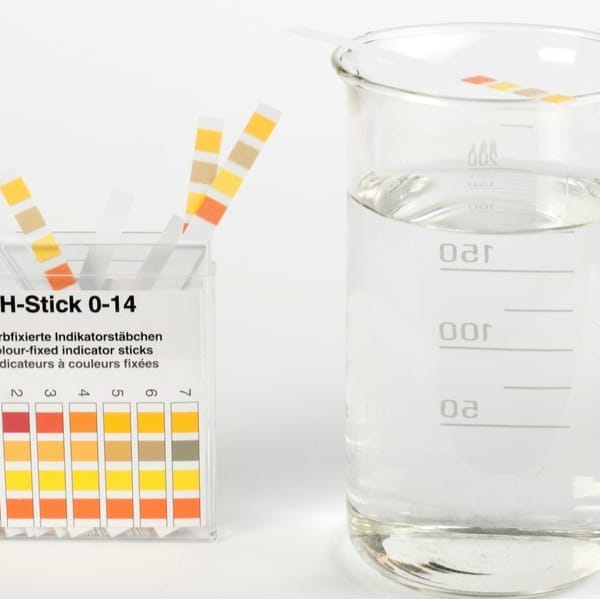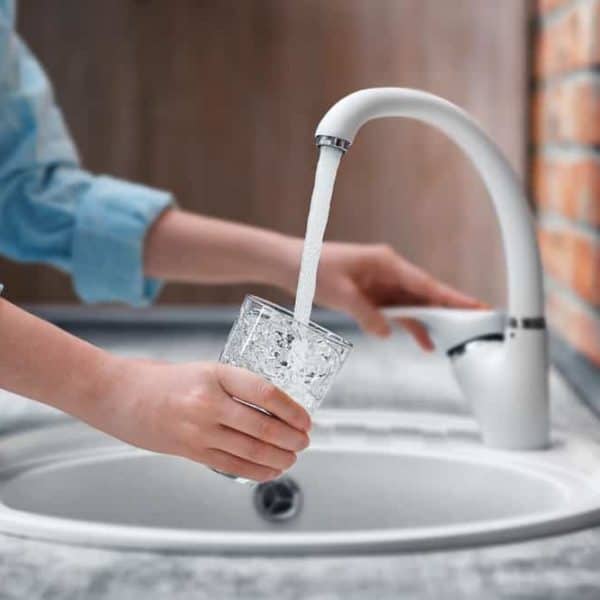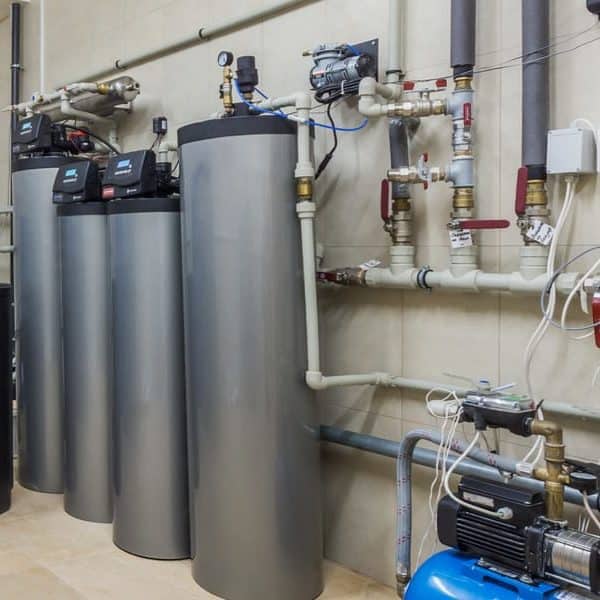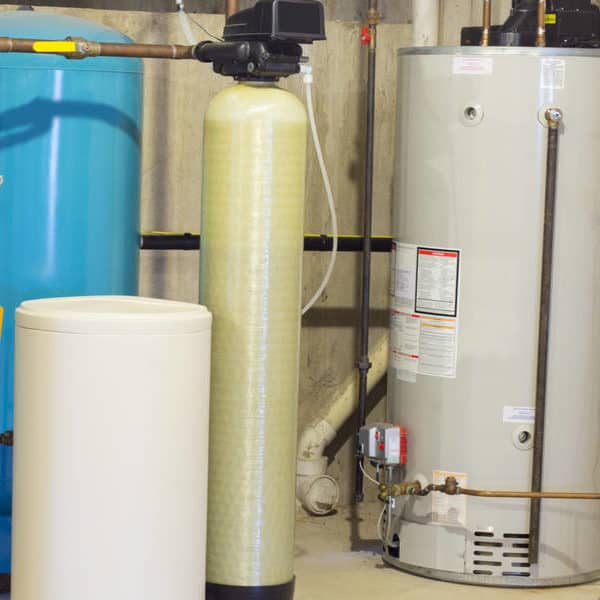If you’re on a search for pure water, you may have heard a number of different terms. It can all be pretty confusing. Just as well, then, that we’re here to help!
We’re going to look at distilled versus deionized water. We’ll explain what they are, and how they’re different. And we’ll look at the advantages and disadvantages of each.
What are distilled and deionized water?
To answer this question, we need to look at the processes that produce these two different kinds of water. They’re quite different, and the results they produce are less similar than you might imagine.
Distilled water is formed by first boiling water, then condensing the steam that forms. You can buy a water distiller to do the job, but they don’t come cheap. Alternatively, you can distill your own water at home using just a pan, a metal bowl, a hob and a block of ice. This YouTube video shows how it’s done.
Deionized water, on the other hand, is formed by running water through two types of electrically charged resin. The source water can be tap water, spring water or distilled water. The two resins are known as cation and anion. Cation attracts positive ions and anion attracts negative ions.
As the water passes through, positive hydrogen and negative hydroxyl ions in the resin replace the molecules of the contaminant in the water. Chemicals with a positive charge, like calcium, are exchanged for hydrogen molecules. Negatively charged chemicals, iodine, for example, are exchanged for hydroxyl.
The hydrogen and hydroxyl then combine to create more water molecules. The result is deionized water.
It’s similar to the process used in water softeners. There, cation exchange systems extract the minerals that cause lime-scale from water.
It isn’t as simple to make deionized water as distilled water. You’ll need specialist equipment if you want to give it a go. And you’ll need to regenerate the resin bed after it’s been used for a while. Take a look at this YouTube video to see the process.
Distilled Water vs. Deionized Water: Which is purer?
Distilled and deionized water are most commonly used in laboratories for specific purposes. The purity of the end result depends largely on the source water that’s used. There is, though, a difference between the types of impurities that are removed by the two processes.
Distillation will remove any impurities that have a boiling point higher than water. They’ll be left behind in the source water. Most minerals fall into this category.
But there are some nasties that will vaporize along with the water. If mercury and some volatile organic compounds are present in the source water, they’ll be in the distilled water too.
Deionization, on the other hand, just removes ions. It won’t remove what is called “molecular species” – like sugar. And it won’t make any difference to organic particles that don’t have an electric charge. That includes most viruses and bacteria.
Which is better for drinking?
Both these kinds of water are more often used in laboratories than they are for drinking. But while distilled water can be drunk, deionized water shouldn’t be. That’s because it’s corrosive – it can damage tooth enamel and soft tissues.
And deionization won’t remove viruses or bacteria either. If you’re not sure about the quality of the source water, deionizing it won’t make it ok to drink.
While distilled water may be drinkable, remember that distilling alone won’t remove all impurities either. If your source water is decent quality, the distilled water will be too. But for a purer result, filter it first.
Reverse osmosis systems are a good bet to help with this. They will remove contaminants with a lower boiling point that will be left behind by distillation.
Domestic RO systems often take the form of an under sink water filter.
For anyone concerned about fluoride in drinking water, distillation is a very effective way of removing it. Some manufacturers claim their water distillers remove up to 99% of fluoride.
But the main thing to bear in mind about drinking distilled water is that the natural minerals will have gone. Many of these have health benefits, as well as making the water taste better. And there’s also a risk that the container used for distillation can leach chemicals into the water.
If you want pure drinking water, there are better options. And if you’re worried about fluoride levels, investing in a fluoride water filter or water filter pitcher will give good results.
So what would you use deionized and distilled water for?
As long as tap or spring water has been used as the source, distilled water can be used for most laboratory applications. It’s also often used in home appliances like dehumidifiers too.
And it can be distilled repeatedly to produce high-purity water. This is known as double or triple distilled water. It’s good for use in sensitive processes like the manufacture of cosmetics.
Deionized water, on the other hand, is used for applications requiring a soft solvent. It’s often used in microbiology, in making batteries, and for cooling.
And in some cases, either kind of water can be used. Both will work well for cleaning glassware and sterilizing equipment. And both can be used to make solutions.
Distilled Water vs. Deionized Water: Which is more expensive to produce?
Although there are many applications where either deionized or distilled water can be used, there is a cost difference.
Distilled water – particularly double or triple distilled – takes longer to make. That’s especially the case where large amounts of water are needed. And boiling it, of course, uses up power.
In contrast, deionized water can be made fairly quickly. Using a mixed bed resin – in other words, one with both cations and anions – is fastest. In that case, the water will only need to pass through the resin once.
The only power needed will be to move water through the system. But over time, the resin bed will run out of hydrogen and hydroxyl molecules. At that point it will need to be regenerated. That’s something that can only be done in an industrial setting.
Overall, though, deionized water is less expensive than distilled water. So if the application allows for a choice of water types, deionized water is usually the better bet.
What about storage?
Distilled water has a longer shelf life than deionized water.
That’s because deionized water reacts to the environment, and especially to carbon dioxide in the air. Carbon dioxide dissolves quickly in deionized water and makes it slightly acidic.
For that reason, this type of water is usually produced and used straight away. Keeping it in an airtight container can prolong its life, but check what the container is made of. Steer clear of plastics, particularly those containing BPA. They can leach into the water.
Glass is the best option, because it’s inert. Avoid metal containers, which can corrode. And for commercial applications where glass is impractical, high-density polyethylene containers are a good choice. Also known as HDPE, they won’t corrode and will stay cool.
Distilled water doesn’t have the same issue with carbon dioxide and it won’t go bad. But if you choose to drink it, you may find it tastes stale after a few days. And as with any food or drink, avoid plastic containers with BPA.
What about environmental impacts?
Distilling water requires energy to boil the source water and cool the steam that’s produced. It’s considerably more energy-intensive than other purification processes like reverse osmosis systems.
To produce one liter of distilled water you’ll typically need 1.65 kilowatts of power and nine liters of cooling water. Compare that with reverse osmosis. Here, the same amount of purified water requires one kilowatt of power and produces five liters of wastewater.
If you’re distilling on a small scale, this won’t be a major consideration. But if you require large amounts of purified water for industrial purposes, reverse osmosis is kinder to the environment.
As we’ve already seen, deionization requires power only to keep the water moving through the system. But while it may consume less energy than distillation, other factors influence its environmental impact.
The minerals removed from the water during deionization will end up in the resin bed. That means that over time, the resin will need to be regenerated. That process produces salt and brine waste, which can have adverse effects on the environment.
A well designed and maintained deionization system can, though, minimize these impacts.
The different designs and maintenance regimes mean it’s difficult to directly compare the environmental impacts of deionizing and distillation. But looking solely at energy use, deionization is the more environmentally friendly option.
Conclusion
That brings us to the end of our comparison of distilled water versus deionized water. As we’ve seen, the two are very different – in use, cost and environmental impact.
With so much information out there on different purification systems, it can be hard to know where to start. We hope we’ve demystified the terms, and given you the information you need to make the right choice.
If you’ve found this article useful – and we hope you have – please share it with others.
And if you have your own experience using distilled or deionized water, we’d love to hear from you. How did you make your choice? And did it work out the way you expected? Please comment and let us know!
